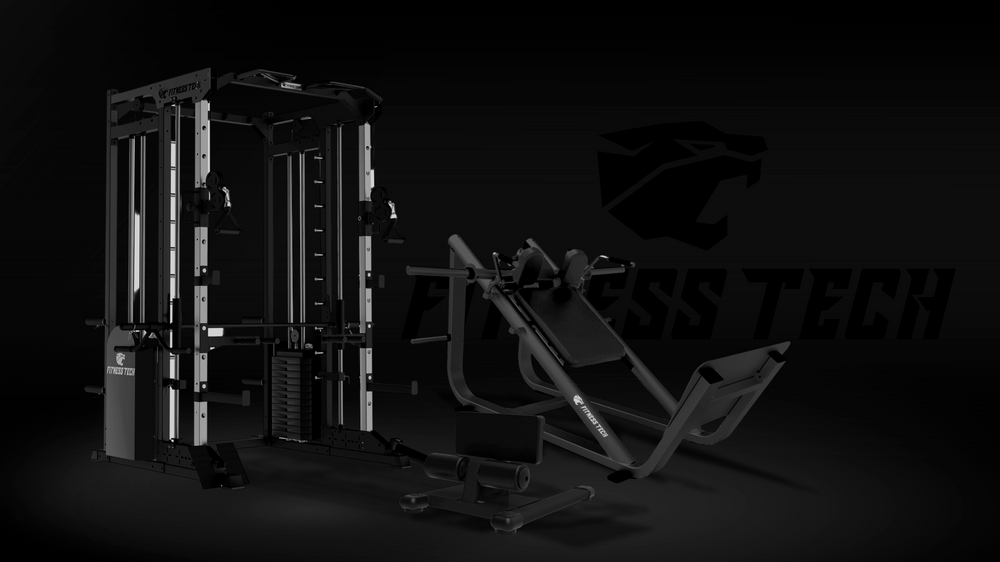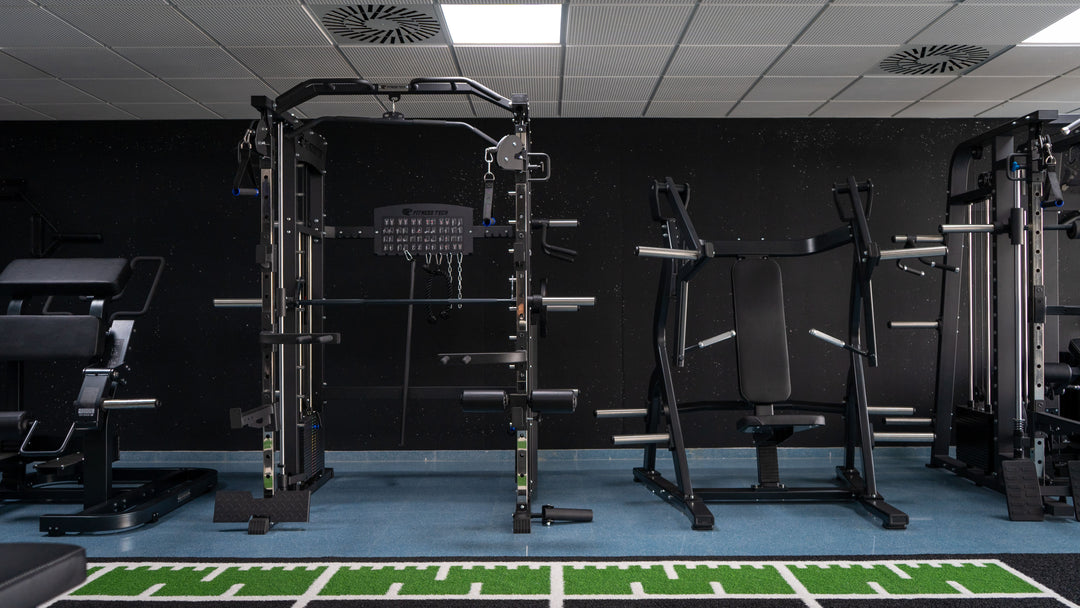How to make a gym routine: specialist advice

Carrying out a gym routine comes with a great number of advantages. Firstly, because it will be easier for you to meet your goals and objectives. Secondly, because of all the benefits that exercise has for your physical health.
For example, to calm anxiety and stress, provide energy, improve your sleep quality, strengthen muscles and bones, lose weight, and tone up, among others.
We know that sometimes designing a gym routine can be complex, so in this article we explain what you have to do for what your body needs. Keep reading to learn how to make a gym routine!
How to create a gym routine: what cannot be missing
Designing or creating a gym routine, if you don't have much idea of what you want, can be quite a complex task. Therefore, the first and most important thing, above all, is to focus on what your goals are and propose something realistic.
If you are just starting and do not have a personal trainer, it is better to do 12 repetitions and after a few weeks you could increase it. To select the exercises, keep the following in mind:
- Frequency: To see results from the exercises, train at least 3 days a week and a maximum of 6. Recovery is also important.
- Duration: The duration of workouts should be 30 to 80 minutes. Start slowly and gradually increase the intensity.
- Resistance, strength, and cardio: Whether to define, lose weight, or gain muscle mass, it is important to work with resistance, strength, and cardio exercises. You can combine them in the same session or alternate depending on the day. You can also prioritize one goal by dedicating most of the time to it.
- Train multiple muscle groups: It is recommended that you train two to three major muscle groups per session.
- Number of sets: Alternate between 9 and 18 sets per training session.
- Diet: Of course, for the exercise to be effective and for you to achieve the goals you set, combine sports with diet. You can use protein supplements if what you want is to hypertrophy or gain muscle mass.
How to create your gym routine: Where to start?
Designing or creating a gym routine, if you don't have much idea of what you want, can be quite a complex task. Therefore, the first and most important thing, above all, is focus on what your goals are and propose something realistic. To select the exercises, keep the following in mind:
How to organize gym routine: free weight, body weight, or machine exercises
To start and prevent injuries, it is recommended to use guided machines at the lowest levels. Once you have mastered that level (don’t take too long), ideally you should move on to exercises with your own body weight or free weights (such as dumbbells, bars, kettlebells…). It is important to promote cross-training.
How to organize gym routine: open kinetic chain exercises vs closed kinetic chain
The exercises of open kinetic chain are those in which the joint farthest from the body area where the movement is performed moves freely and without any resistance. For example, the arms when working with dumbbells in upper body exercises. The wrist joint is the farthest segment of the kinetic chain, so when performing the exercise it moves through space without any impediment. In the case of the closed kinetic chain the opposite happens. The joint farthest from the body area does not move. For example, with push-ups since the wrist joint remains fixed and in contact with the surface at all times.
How to organize gym routine: aerobic vs anaerobic exercises
Finally, we have aerobic and anaerobic exercises. The difference between them lies in the energy supplied in each. Here are some examples in each case:
- Aerobic exercises: Walking at a good pace, cycling, swimming, skating…
- Anaerobic exercises: Weightlifting, short sprints at high speed, sit-ups, jumping rope…
How to make a gym routine: sets/repetitions, intensity/volume, and rest

Among the most notable and important variables when answering how to create a gym routine, it is essential to consider the following.
Sets and repetitions in the gym routine
Of course, everything varies depending on the type of training you are going to do, as well as your physical condition. These are the standard values for a basic routine.
- Training routine to gain strength: perform 3 to 4 sets with 1 to 3 repetitions each. At maximum intensity.
- Training routine for hypertrophy: perform 3 to 4 sets of 8 to 10 repetitions each. With medium intensity.
- Training routine to gain strength-endurance: perform 4 to 5 sets of 10 to 15 repetitions. With low intensity.
Intensity and volume in the gym routine
Intensity and volume are two variables closely linked to the previous ones, as we have indicated. What you should keep in mind is that the intensity refers to the degree of effort exerted per repetition (movement or exercise). In strength exercises, intensity is measured by the value expressed as a percentage of the RM (Maximum Repetition). In cardio, intensity is measured based on maximum heart rate, pace, or subjective effort, among others. The volume, on the other hand, relates to the total amount of work performed. It is important to pay attention to this aspect to avoid stress and overtraining situations, as well as to prevent injuries.
Rest periods in the gym routine
It is very important to dedicate time to rest so the body can recover from injuries and for the exercise to take effect. Keep in mind that overexertion can trigger an immune response in the body, preventing fat burning, for example, to conserve energy. Rest applies both to the recovery day(s) and to rest between exercises. In the latter case, consider the following:
- Strength exercises: Between 3 and 5 minutes of rest per set.
- Hypertrophy exercises: Between 1 and 2 minutes per set.
- Strength-endurance exercises: Up to 1 minute.
Designing an effective gym routine may seem challenging at first, but with proper planning and a clear focus on your goals, it becomes an achievable task.
Remember that the key to success lies in consistency and the progressive adaptation of exercise intensity. Make sure to balance different types of exercises, from endurance and strength to cardio, and to work all muscle groups for a comprehensive workout.
Don't underestimate the importance of good nutrition and adequate rest to maximize the benefits of your routine. With these tips, you'll be well on your way to a healthier and fitter life.






Leave a comment